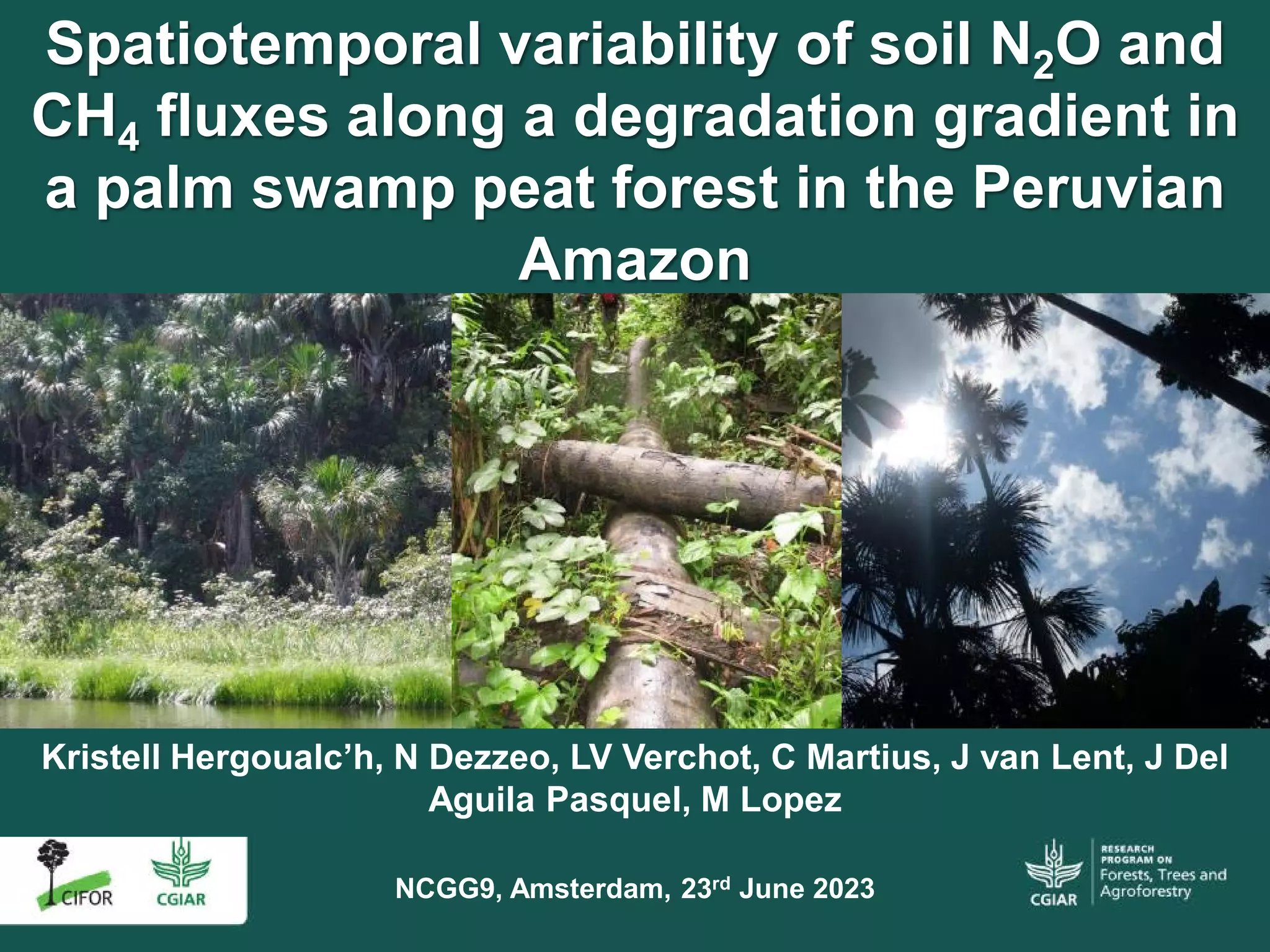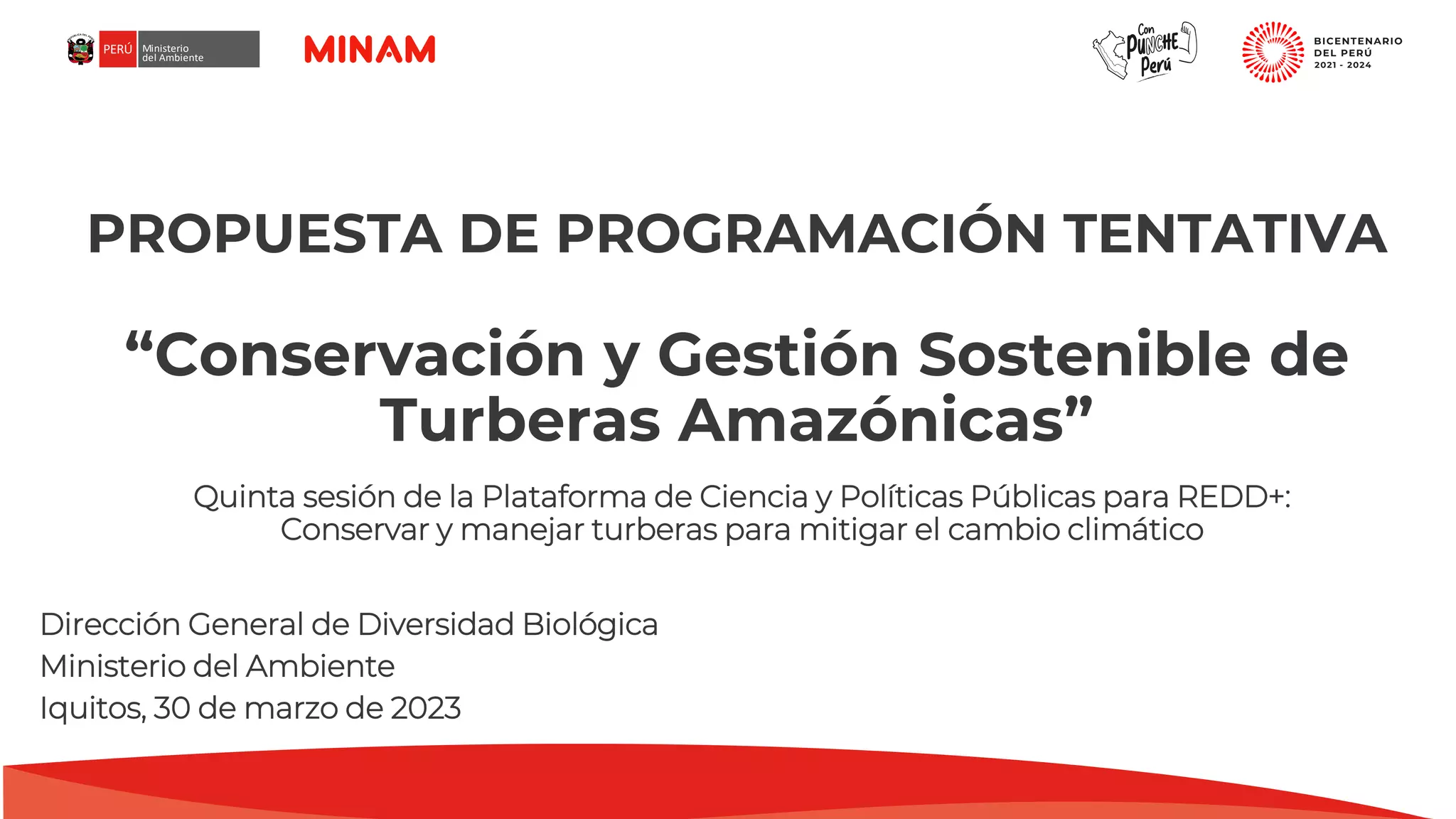
Tropical peat swamp forests (PSF) are characterized by high quantities of carbon (C) stored as organic soil deposits due to waterlogged conditions which slows down decomposition. Globally, Peru has one of the largest expanse of tropical peatlands, located primarily within the Pastaza-Marañón river basin in the Northwestern Peru. Peatland forests in Peru are dominated by a palm species—Mauritia flexuosa, and M. flexuosa-dominated forests cover ~ 80% of total peatland area and store ~ 2.3 Pg C. However, hydrologic alterations, land cover change, and anthropogenic disturbances could lead to PSF’s degradation and loss of valuable ecosystem services. Therefore, evaluation of degradation impacts on PSF’s structure, biomass, and overall C stocks could provide an estimate of potential C losses into the atmosphere as greenhouse gases (GHG) emissions. This study was carried out in three regions within Pastaza-Marañón river basin to quantify PSF’s floristic composition and degradation status and total ecosystem C stocks. There was a tremendous range in C stocks (Mg C ha-1) in various ecosystem pools—vegetation (45.6–122.5), down woody debris (2.1–23.1), litter (2.3–7.8), and soil (top 1 m; 109–594). Mean ecosystem C stocks accounting for the top 1 m soil were 400, 570, and 330 Mg C ha-1 in Itaya, Tigre, and Samiria river basins, respectively. Considering the entire soil depth, mean ecosystem C stocks were 670, 1160, and 330 Mg C ha-1 in Itaya, Tigre, and Samiria river basins, respectively. Floristic composition and calcium to Magnesium (Ca/Mg) ratio of soil profile offered evidence of a site undergoing vegetational succession and transitioning from minerotrophic to ombrotrophic system. Degradation ranged from low to high levels of disturbance with no significant difference between regions. Increased degradation tended to decrease vegetation and forest floor C stocks and was significantly correlated to reduced M. flexuosa biomass C stocks. Long-term studies are needed to understand the linkages between M. flexuosa harvest and palm swamp forest C stocks; however, river dynamics are important natural drivers influencing forest succession and transition in this landscape.
Download:
 file
file

- Authors: Bhomia, R.K., van Lent, J., Grandez-Rios, J.M., Hergoualc'h, K., Honorio Coronado, E.N., Murdiyarso, D.
- Author Affiliation: University of Florida, Instituto de Investigaciones de la Amazonía Peruana (IIAP), Wageningen University, Center for International Forestry Research
- Subjects: peatlands, degradation, swamps, tropical forests, carbon sinks, soil organic carbon
- Publication type: Journal Article, ISI
- Source: Mitigation and Adaptation Strategies for Global Change 24(4): 645-668
- Year: 2019
- DOI: https://doi.org/10.1007/s11027-018-9809-9
















